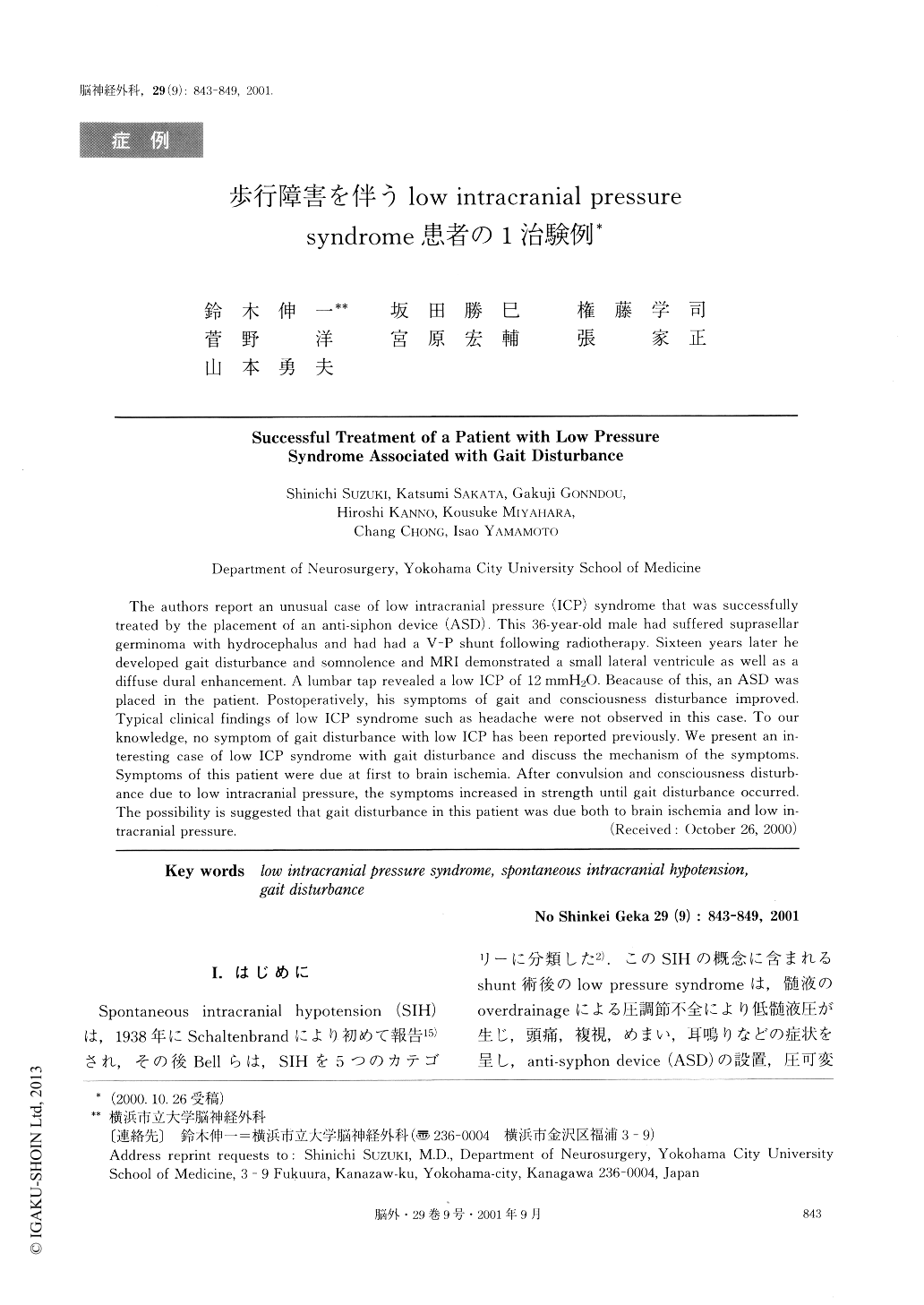Japanese
English
- 有料閲覧
- Abstract 文献概要
- 1ページ目 Look Inside
I.はじめに
Spontaneous intracranial hypotension(SIH)は,1938年にSchaltenbrandにより初めて報告15)され,その後Bellらは,SIHを5つのカテゴリーに分類した2).このSIHの概念に含まれるshunt術後のlow pressure syndromeは,髄液のoverdrainageによる圧調節不全により低髄液圧が生じ,頭痛,複視,めまい,耳鳴りなどの症状を呈し,anti-syphon device(ASD)の設置,圧可変式バルブへの変更により症状の改善が得られることが知られている6).
今回脳腫瘍(germ cell tumor)にてV-P shuntを設置し,その後髄膜炎を併発したため,V-Pshuntを再設置し良好に経過していたが16年の経過で歩行障害が出現し,低髄液圧症候群を疑い,ASDを設置したことで歩行障害が改善した1例を経験した.本例は低髄液圧症候群に高頻度に出現する頭痛などはなく,代わりに非特異的な歩行障害の症状を呈したのでこの病態や治療経過に関して若干の考察を加えて報告する.
The authors report an unusual case of low intracranial pressure (ICP) syndrome that was successfully treated by the placement of an anti-siphon device (ASD). This 36-year-old male had suffered suprasellar germinoma with hydrocephalus and had had a V-P shunt following radiotherapy. Sixteen years later he developed gait disturbance and somnolence and MRI demonstrated a small lateral ventricule as well as a diffuse dural enhancement. A lumbar tap revealed a low ICP of 12 mmH2O. Beacause of this, an ASD was placed in the patient. Postoperatively, his symptoms of gait and consciousness disturbance improved.Typical clinical findings of low ICP syndrome such as headache were not observed in this case. To our knowledge, no symptom of gait disturbance with low ICP has been reported previously. We present an in-teresting case of low ICP syndrome with gait disturbance and discuss the mechanism of the symptoms. Symptoms of this patient were due at first to brain ischemia. After convulsion and consciousness disturb-ance due to low intracranial pressure, the symptoms increased in strength until gait disturbance occurred. The possibility is suggested that gait disturbance in this patient was due both to brain ischemia and low in-tracranial pressure.

Copyright © 2001, Igaku-Shoin Ltd. All rights reserved.


